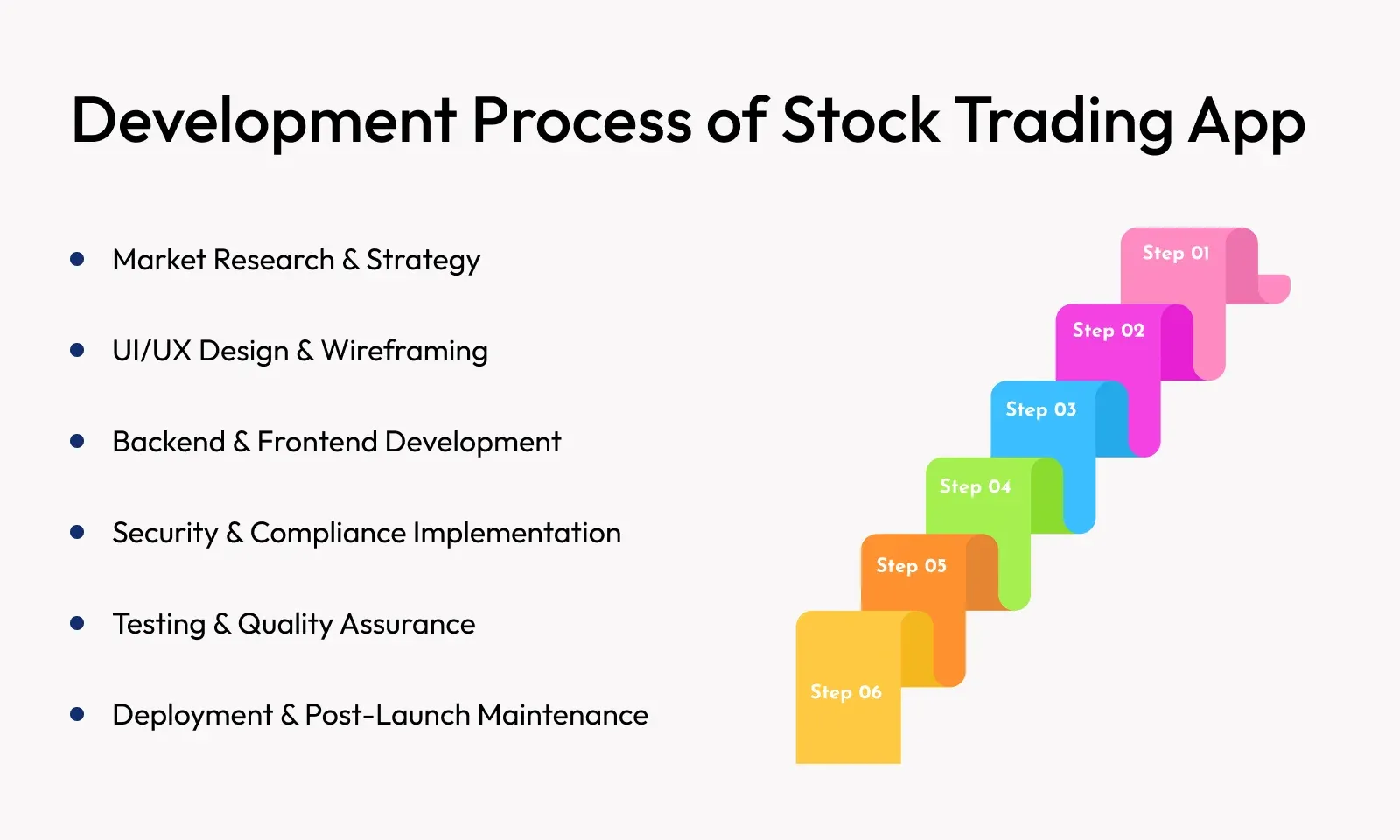Building a stock trading app is a complex process that involves technical, regulatory, and user experience challenges. Below are some of the most common challenges businesses face—and strategies to overcome them.

- Ensuring Regulatory Compliance
Challenge: Stock trading apps must comply with financial regulations like SEBI (India). Non-compliance can lead to legal action or operational shutdowns.
Solution: Partner with legal and compliance experts from the start. Implement KYC (Know Your Customer) & AML (Anti-Money Laundering) verification as per regulations. Regularly update policies based on changing financial laws.
- Security & Fraud Prevention
Challenge: Trading apps handle sensitive financial data and are prime targets for cyberattacks, identity theft, and fraud.
Solution: Use AES encryption for data security. Implement multi-factor authentication (MFA) & biometric logins. Deploy real-time fraud detection systems to monitor suspicious transactions. Conduct regular security audits & penetration testing.
- Handling High-Traffic & Low-Latency Trading
Challenge: Stock trading requires real-time order execution, and delays can lead to financial losses for users. Apps must handle high trading volumes without lag.
Solution: Use a microservices architecture with scalable cloud solutions (AWS, GCP, or Azure). Implement low-latency APIs for stock market data and trade execution. Optimize database queries & caching mechanisms to reduce processing time. Stress test the app under high trading volumes before launch.
- Providing Accurate Real-Time Market Data
Challenge: Users expect instant stock price updates, live charts, and financial news feeds. Delays or inaccuracies can erode trust.
Solution: Integrate reliable third-party market data APIs like Alpha Vantage, Bloomberg, NSE/BSE, and Morningstar. Use WebSockets instead of REST APIs for real-time data updates. Implement redundant data sources to avoid downtime if one provider fails.
- Creating an Intuitive User Experience (UX)
Challenge: Many trading apps fail because they are too complex or unintuitive for new users. Balancing advanced features with simplicity is key.
Solution: Design an easy-to-navigate UI with a clutter-free dashboard. Offer customizable trading interfaces for beginners vs. advanced traders. Provide interactive tutorials, tooltips, and demo trading options.
- Managing Payment & Withdrawal Processing
Challenge: Slow fund deposits and withdrawals frustrate users, leading to churn. Ensuring secure and fast transactions is critical.
Solution: Integrate multiple payment options (UPI, bank transfer, credit/debit cards, digital wallets). Enable instant withdrawals using pre-approved bank accounts. Use automated payout systems to reduce manual intervention.
- Retaining Users & Reducing Churn
Challenge: With intense competition in fintech, users quickly switch to competitors if they don’t get a smooth experience or see added value.
Solution: Implement data-driven personalized investment recommendations. Offer loyalty programs, referral bonuses, and fractional investing. Continuously improve features based on user feedback and analytics.
Overcoming these challenges requires careful planning, the right technology stack, and strong compliance measures. Partnering with an experienced fintech development team can help mitigate risks and ensure a successful launch.















